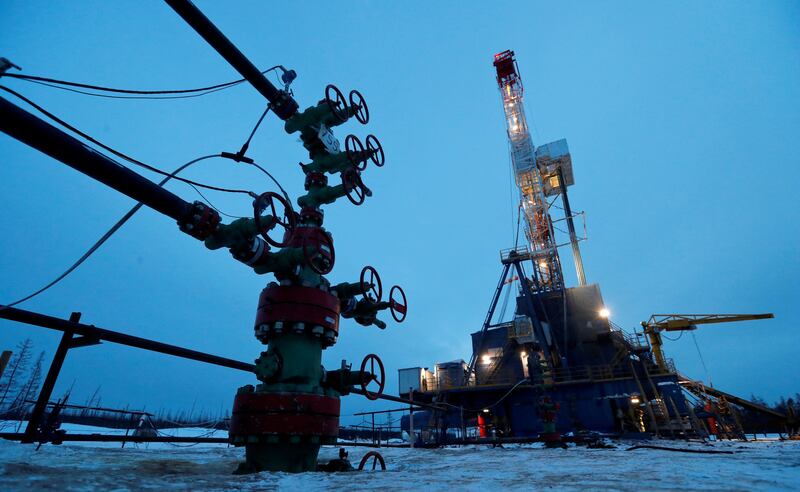Oil prices continued to fall on Wednesday after slumping heavily a day earlier ahead of an expected vote by politicians in Washington to lift the $31.4 trillion US debt ceiling and an upcoming Opec+ meeting.
Brent, the benchmark for two thirds of the world’s oil, was trading 2.39 per cent lower at $71.78 a barrel at 3.56pm UAE time on Wednesday. West Texas Intermediate, the gauge that tracks US crude, was down 2.76 per cent at $67.54 a barrel.
Brent settled 4.4 per cent lower to $73.54 at market close on Tuesday and WTI fell by an equal amount to $69.46, marking the biggest decline in about a month as markets factor in mixed economic data and possible weaker demand from China, the world's biggest importer of crude and second largest economy.
On Wednesday, the latest data from China showed signs of weakening demand and a slowdown in its manufacturing sector.
China's manufacturing purchasing managers' index (PMI) for May fell to 48.8 from 49.2 in April, according to data from the National Bureau of Statistics, its lowest in five months and the second consecutive reading below the 50-point mark that separates expansion from contraction.
The latest data on Wednesday also showed that industrial production in Japan fell 0.4 per cent in April, missing predictions of 1.4 per cent growth.
The weakening data feeds into the International Monetary Fund's prediction of a weakening global economy and growth slowing to 2.8 per cent this year, below the 3.4 per cent expansion recorded in 2022 and the historical growth average of 3.8 per cent over the 2000-2019 period.
"Oil is on the ropes as the upcoming week will likely contain further confirmations that China’s recovery is struggling, the US labour market is cooling, the Fed will likely deliver more tightening that will eventually cripple the economy later this year, and as everyone waits to see if the debt deal can make it to the President’s desk," said Edward Moya, senior market analyst at Oanda.
"It is hard to get excited about jumping back into oil as we have an upcoming Opec+ meeting that seems poised to be just a review of production levels, but no announcement of further cuts."
On April 2, Opec+ producers announced voluntary output cuts of 1.16 million barrels per day to ensure oil market stability. Brent, which crossed $85 a barrel following the group’s decision, has since lost about 14 per cent of its value on a weakening global crude demand outlook.
The 23-member Opec+ alliance is set to meet in Vienna on Sunday to discuss the group’s production policy.
Last week, Saudi Arabia's Energy Minister told oil market short sellers to “watch out”, which was seen by some traders as a signal for further output reductions.
“I keep advising them that they will be 'ouching'. They did 'ouch' in April,” said Prince Abdulaziz bin Salman during an event in Qatar.
However, Russian Deputy Prime Minister Alexander Novak later said he expected no new steps from Opec+, Reuters reported, citing his interview with Russian daily Izvestia.
"With several Opec+ member countries voluntarily removing barrels from the market, and amid rising demand during the Northern Hemisphere’s summer, we expect larger inventory draws to materialise and support prices," UBS analysts said in a research note on Tuesday.
Goldman Sachs expects Brent to trade at $95 a barrel by the end of this year from a previous $90 estimate and $100 in 2024 compared with a prior $97 forecast.
"In the near term, oil politics, potential further export cuts, and a reversal of the depressed market mood seem to be the main drivers to watch," said Norbert Ruecker, head of economics and next generation research at Julius Baer.







